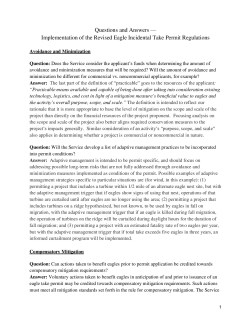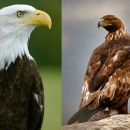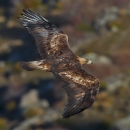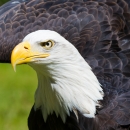Document - application/pdf

This document has frequently asked questions about the 2016 final rule revising the regulations for permits for incidental take of eagles and take of eagle nests. The Service analyzed various alternative management options and rule revisions, including the final rule revisions, in a programmatic environmental impact statement (PEIS).
Attachments
| Attachment | Size |
|---|---|
| eagle-regulations-frequently-asked-questions.pdf355.32 KB | 355.32 KB |
Publication date
Program
Species
FWS Focus
FWS Focus


